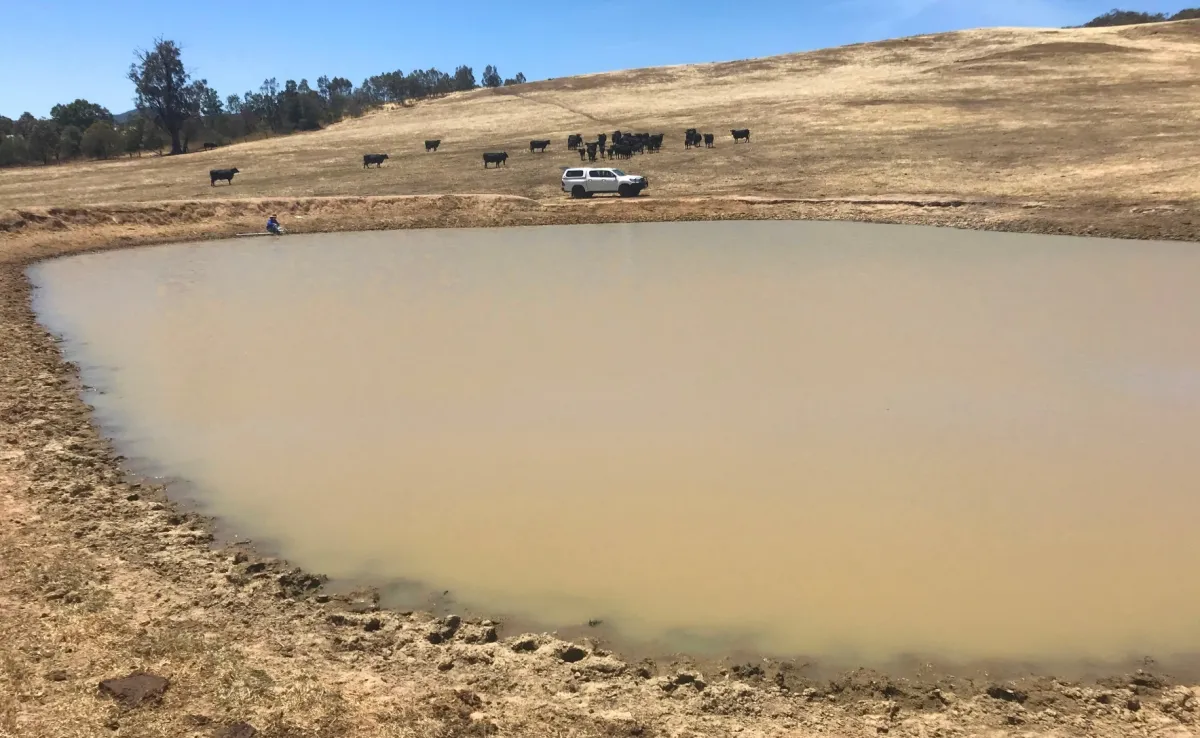Better dams offer major benefits to farmers and livestock
Managing the water quality of farm dams is critical to the health of livestock as well as boosting crop production, according to new research from the Sustainable Farms group at The Australian National University (ANU).
According to the ANU researchers, “enhancing” dams by erecting fencing would help mitigate the impacts of livestock and significantly improve water quality, while also allowing vegetation to flourish, which is good for biodiversity.

There are more than 1.7 million farm dams across Australia. More than 650,000 of them are located in the Murray-Darling basin region.
Farm dams provide habitats for a wide range of native species, so any direct environmental impact to these dams can adversely impact biodiversity. According to the research team, the findings offer valuable insight for farmers and the Australian agriculture industry.
“These dams store a huge amount of water, yet traditionally there has been minimal investment in improving the quality and retention of water in these dams,” lead author Dr Maldwyn Evans, from ANU, said.
The researchers collected data over two and half years on water quality, vegetation, rainfall and other relevant factors, in and around 109 completely fenced, partially fenced, or unfenced farm dams across 34 farms in the sheep-wheat belt of southeast Australia. They also looked at whether livestock had direct access to the dams for extended periods of time.
“We found that when livestock were excluded from the surrounds of a dam and native vegetation was replanted or allowed to regenerate, the water quality in dams was significantly improved,” Dr Evans, from the ANU Sustainable Farms group, said.
“For example, levels of phosphorus, nitrogen and other chemicals were all lower in these enhanced dams than in other dams.
“Phosphorus is directly linked to increased algal blooms, which pose a serious risk of poisoning for many animal species, including livestock.
“Our results also indicated that reduced livestock grazing in the surrounds of enhanced dams reduced levels of E. coli in the water. This highlights that one mechanism by which faecal bacteria enter dams is through direct run off containing faeces.
“We found reducing livestock access to farm dams using fencing led to a decrease in trampling, grazing and browsing which increased vegetation cover in and around the dam. Increased vegetation cover has been shown to improve water quality by reducing soil erosion and supporting physical and chemical filtration of sediment, nutrients and faecal material in inflows.”
David Smith, a co-author of the study from the ANU Sustainable Farms group, said even modest restoration efforts to the surrounds of farm dams can have positive results.
“If a farmer’s primary goal is to maximise water quality, then fencing that restricts livestock access to a dam will result in the best outcomes. By installing a pipe and trough system, livestock can still access the drinking water in these dams,” he said.
“Enhancing large numbers of dams across a farm is not always feasible. In those cases, rotational grazing management can provide some of the benefits to water quality. Rotational grazing has a diverse range of benefits. These benefits include substantial increases in the probability of tree regeneration and increases in plant diversity.
“Our research shows that dam enhancement improves vegetation cover in and around the dam, providing ideal conditions for plants and animals, such as birds and frogs, to thrive. This likely increase in vegetative biodiversity also provides habitat and foraging opportunities for other animals.
“In related research, we have demonstrated that enhancing farm dams has significant benefits for birds, frogs and waterbugs and that enhanced farm dams can become hotspots for breeding woodland birds.”
The research has been published in the journal Agriculture, Ecosystems and Environment.
This article was first published by ANU Reporter.



